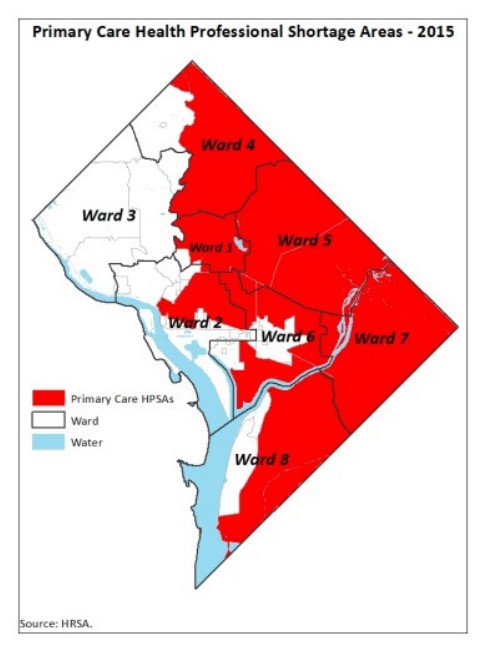It is no secret that Wards 7 and 8 are the poorest areas in D.C. A lack of resources in Wards 7 and 8 and a vast amount of resources in Wards 1, 2, and 3 create a gap in Washington D.C .
According to Mark S. Johnson, associate professor at Howard and Chair of, Community and Family Medicine, your health is related to your zip code.
He said, “One of the biggest differences you’re going to see are maternal and fetal mortality. The maternal and fetal mortality in Wards 7 and 8 is three times more greater than it is in the rest of the city. So it really speaks to the fact that your health is related to your zip code. Your health is related to your socio-economic status and your health literacy. And it is a challenge for the city to bring the health status of Wards 7 and 8 up to the rest of the district.”
Those wards currently do not have a hospital. This makes it harder to receive preventative care.
Angie Johnson, a resident of Ward 8 said, “we need something now.”
With the lack of hospitals in Wards 7 and 8, where can people go?
34 year old Chandell Brewster, a resident of Ward 7 said, “Uptown had a lot of hospitals they can choose from. There is no hospitals close to us.
There is a hospital coming in 2020. But what about in 2019? There are people being injured daily. How can they get the care that they need if they have to drive far to a hospital? And what if they do not have a car or money for other forms of transportation? And if Ward 8 gets a hospital, what is stopping them from shutting down another hospital?
Brewster explains how ecstatic she is about a new hospital. She hopes that the survival rate will be better.
hospital
